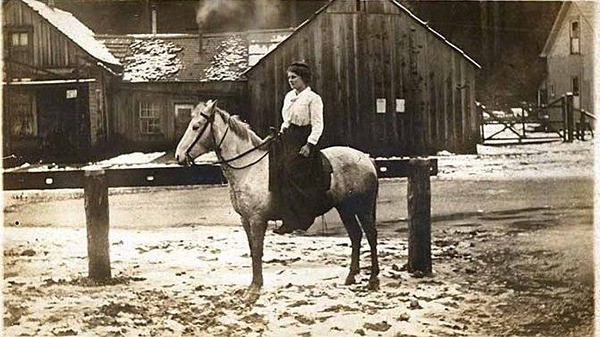By Christi Baron
A few years ago Larry Burtness told me that the oldest building in Forks was a small wooden structure that sat in the side yard of the former Ninke house which sits in the middle of downtown. I thought to myself I need to take a picture of that little building and of course I didn’t.
One day driving on West Division I looked over and the building was gone. It had been torn down.
Here is the story of the building that was once the Cottage Hotel.
The Cottage Hotel was not built where it stood when it was torn down. It originally was built about 1880 on the homestead of Ole Nelson, one of the earliest settlers in Forks.
When a larger home was built on the homestead in the 1890s the building was moved to the spot where Native to Twilight is today at the stoplight.
The earliest residents of the house at this new location were Sam Kilby and his wife Barney. They kept a small general store with staple groceries, men’s boots and work clothes, bolts of cotton fabric and almost anything.
Barney took care of her family, hurried into the store when the opening door rang a bell that announced a customer. She occasionally served a meal to others beside her own family.
Sam drove a freight wagon between Forks and Clallam Bay, a four-day trip in those days, bringing supplies for the store and handling any other freight that needed transport.
The Kilbys added on to the original house and shingled the exterior.
About 1900 the Kilbys sold to Casper and Ray Maxfield, members of a pioneer family that settled the Quillayute Prairie in the 1870s. They continued the store and the freight service.
Eventually Charlie Sult took over the store but not the freight business. Since there were now two other stores nearby the Sults discontinued retailing and opened the Cottage Hotel.
It was not much of a hotel. One bedroom was downstairs and two upstairs and one of the bedroom you had to go through the other bedroom to get to, so much for privacy.
The rooms had iron beds and springs and homemade mattresses of ticking filled with straw from locally grown oats. The mattresses were “renewed” after every late summer harvest.
There was a small dresser, a kerosene lamp, a washstand with a bowl and pitcher of water, cold water. If someone wanted hot water, they could go to the kitchen and help themselves to hot water in a reservoir on the back of the cook range.
Other facilities were 30 feet off the kitchen in the backyard. The Sults served meals to the boarders and anyone else that showed up at mealtime.
The “office” was bare floors scarred by hobnail and caulks of hundreds of heavy boots, replaced in spots and scarred up again. A few wooden chairs and a wooden bench for seating and a small counter with a register book also were in the room. Decorations on the walls were large calendars on the papered walls.
However, the Sults had something that drew many to this humble room, they had a phonograph with a fine wooden horn. The machine sat on a table beside a wooden chest that held some 200 records neatly arranged and numbered.
The Sults bought only the good records and usually a half dozen callers would come in the evening to listen to the phonograph. Sometimes a visitor would purchase a record and bring it along.
A dozen turns to the crank and a push of a lever and the music would start. The humble Cottage Hotel was Forks’ first night spot.
In 1912 the Sults built a new larger hotel with indoor plumbing, it was also called the Cottage Hotel. In the late 1920s John Grader built a two and a half story addition in front and nailed a huge set of elk antlers in the east gable and changed the name to the Antler’s.
It was at that time that Ole Nelson’s one time home was moved to the place it sat before it was torn down.



